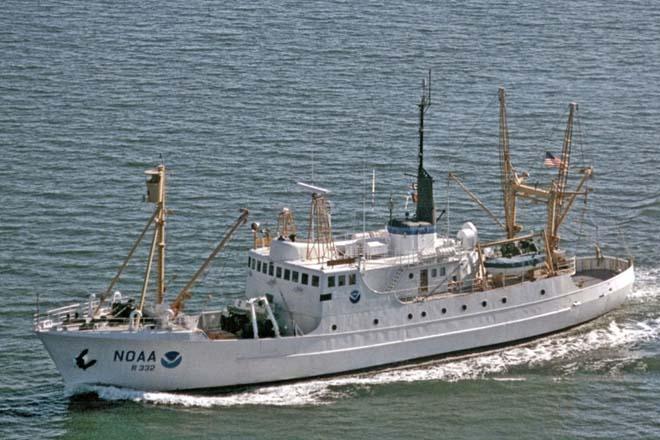For boaters, the two happiest days of their lives is the day they buy their boat… and the day they sell it. Going to sea can be that way. You are very excited about the adventure and leaving, and also happy to be back on dry ground.
For this adventure – it was time to head home. We had been trawl sampling for over week, caught a lot of fish, had a lot of data (for someone to analyze – that was not my job) and completed what we had set out to do. Returning home from sea can sometimes be like returning home from a vacation. You are happy to be home, but already miss the vacation adventure. Many on board felt this way on that last day. Happy and sad at the same time. We were busy cleaning all the stations and supplies, placing things back in their racks, and getting our sea bags ready (including the still wet and fish smelling deck shoes).
I had been keeping a travel journal during the trip and visited the bridge to get an idea of what time we would be back. The captain looked at me and said, “at 4:17pm”. 4:17pm… not 4:16? Not 4:18? 4:17. He replied, with small smirk, “yes… 4:17pm”. Okay… 4:17. We’ll see…
After lunch land came into view. We were near Pascagoula MS – home. We gathered in the galley and talked. Wished each other well and hoped to cross paths again at some time. I then glanced at my watch to see what time it was. It was 3:21pm. We will see.
The crew was moving in all directions to prepare for docking. The radio was going with orders. The bell clanged to let all on board and those on shore know we were about to swing about and pull alongside. It was 4:02pm.
I remember distinctly the ship turning, and pointing south long before 4:17. I remember the radio going, the crew moving, and the ship slowing to an almost crawl. We could see the dock and friends waiting. It was 4:13pm. I was going to let them know that we got back early. As the ship slowly meandered closer, the lines were thrown over, and I heard the squeeze of the large fenders that protected the “O 2” from the concrete wall. It was 4:17pm… amazing.
Trips like this occur all over the world’s oceans every week. Some are gone for a few days; some are gone for a few years. Thousands of others had conducted research on all sorts of projects and added to the vast knowledge we have about our oceans. But there is SO much more to learn. Deep-sea exploration is becoming safer and cheaper. Much of it is being conducted by Remote Operating Vehicles (ROVs) and special 1 ATM GEM dive suits.
My adventure was over. My boyhood dream fulfilled. I really enjoyed my time at sea and would love to do it again someday. For now, I will focus on what those going to sea today learn.

 1
1
